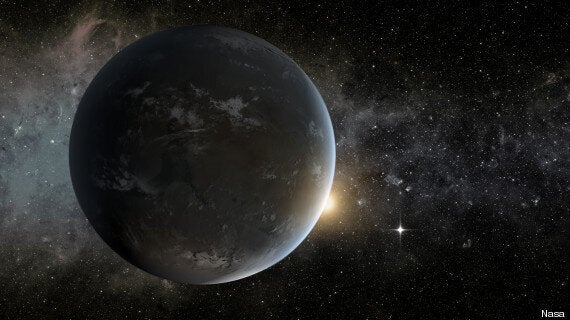Astronomers have discovered two planets potentially able to support life in the same solar system - raising the tantalising possibility of two alien worlds within eyesight of each other.
Kepler 62e and Kepler 62f are orbiting a dim orange star, Kepler 62, in the so-called "Goldilocks Zone", just the right distance from their sun to be able to host life.
The two planets are around 1,200 light years away from us. At around 1.5 times the size of Earth they should be rocky, and are conceivably covered in liquid water.

This artists impression depicts Kepler-62f with 62e as morning star
Although there is a big gap between being life-friendly and actually hosting life, Kepler 62e and 62f have certainly piqued astronomers' interest.
Announcing the discovery at Nasa's Ames Research Center, Lisa Kaltenegger of Harvard University, said: "These are very exciting planets.
"You've got two solid planets in the habitable zone of their star. We don't know if life evolves everywhere, but if it does, these two planets provide great candidates for life."
Life on Kepler 62e and Kepler 62f would be very different from Earth.
Any creatures on the planets would be sea-based, as modeling by researchers at the Harvard-Smithsonian Center for Astrophysics (CfA) suggest both are covered in water.
Kaltenegger said: "These planets are unlike anything in our solar system. They have endless oceans.
"There may be life there, but could it be technology-based like ours? Life on these worlds would be under water with no easy access to metals, to electricity, or fire for metallurgy.
"Nonetheless, these worlds will still be beautiful blue planets circling an orange star - and maybe life's inventiveness to get to a technology stage will surprise us."
Dimitar Sasselov, also of Harvard University, said in a statement: "Kepler-62e probably has a very cloudy sky and is warm and humid all the way to the polar regions. Kepler-62f would be cooler, but still potentially life-friendly.
"Imagine looking through a telescope to see another world with life just a few million miles from your own. Or, having the capability to travel between them on a regular basis.
"I can't think of a more powerful motivation to become a space-faring society."

The Kepler 62 system
The same start also hosts Kepler 62b, 62c and 62d, three more planets in the solar system although these are outside the habitable zone.
The discoveries were made by the Nasa's Kepler observatory launched in 2009 at a cost of £395 million.
Its mission is to discover Earth-like planets which it does by detecting the dips in light as they pass in front of their starts.
So far Kepler has discovered 2,700 potential candidates.